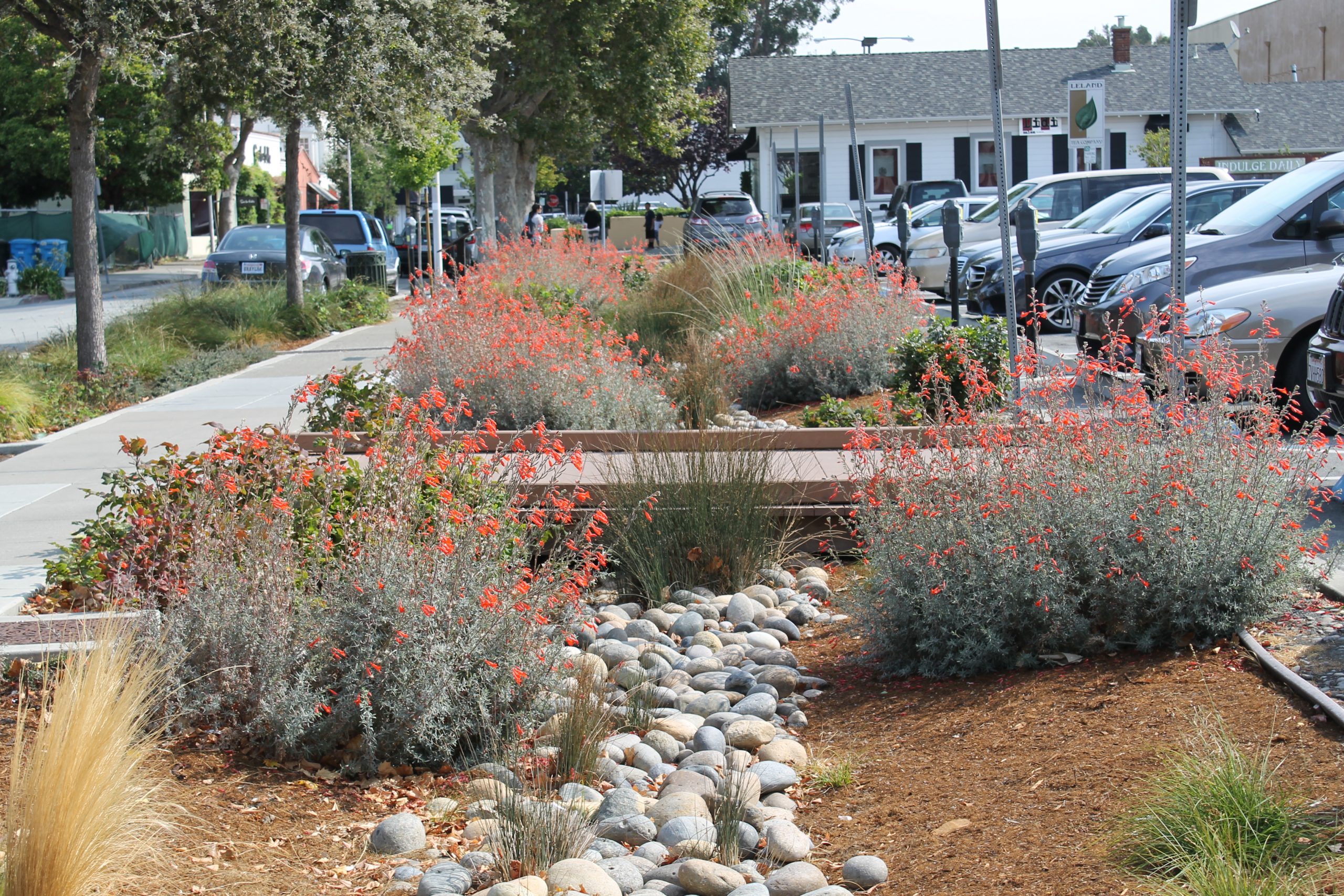What Is Green Infrastructure (GI)?
Roads, parking lots, and other impervious surfaces provide important opportunities for managing rainwater because they constitute as much as 75 percent of the total impervious land area in ultra-urban landscapes.
Rain that falls over an urban area passes over impervious surfaces such as rooftops and pavement and picks up pollutants, including sediment, motor oil, pesticides, and fertilizers. The water that we use to wash our cars and water our gardens can also contribute to this type of runoff. The pollutants carried in this water can harm the larger bodies of water into which it drains, like San Mateo County creeks, the San Francisco Bay, and Pacific Ocean.
“Green infrastructure” is a term that’s used broadly to describe a more cost-effective and resilient approach to managing wet weather and pollutants associated with runoff. It involves capturing, storing and treating rainwater where it falls, using special soils and plants that filter, absorb and evapotranspire water, mimicking a more natural water cycle.
Scalable GI
Green infrastructure can be used at different scales, from backyards to sidewalks to entire ecosystems, like wetlands that buffer against tides and erosion. When we refer to green infrastructure as it relates to stormwater management, the focus is on engineered facilities designed to manage urban rainfall, whether on a street, a property or under a parking area or athletic field. Check out the Green Infrastructure Factsheet, for a quick overview of the benefits of green infrastructure.
At the city or county scale, green infrastructure is a patchwork of natural areas that provide habitat, flood protection, as well as cleaner air and water. Examples may include the preservation and restoration of natural landscapes such as wetlands and creeks. At the neighborhood or site scale, green infrastructure can look like rain gardens, permeable pavements, green roofs, bioswales, trees, and rainwater harvesting systems such as rain barrels and cisterns.
GI Benefits
Mitigating flood risk, protecting our Bay, ocean, and waterways, creating safer communities— these are just a few ways green infrastructure can lessen the impacts of climate change and heavy storms. Green Infrastructure means a stronger, safer, and more prepared San Mateo County.
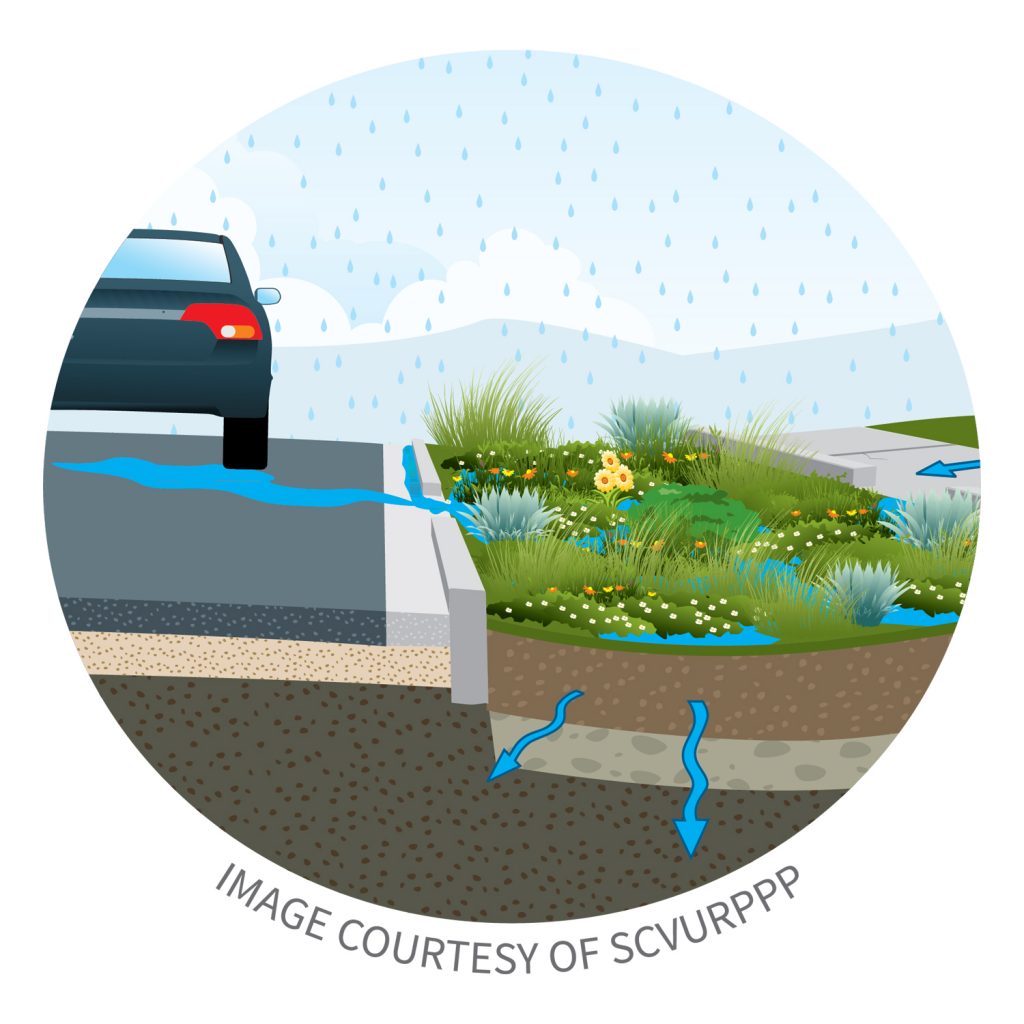
GI employs natural filtering processes that reduce water pollutants from entering water bodies while working above ground to filter air pollutants and particulates.
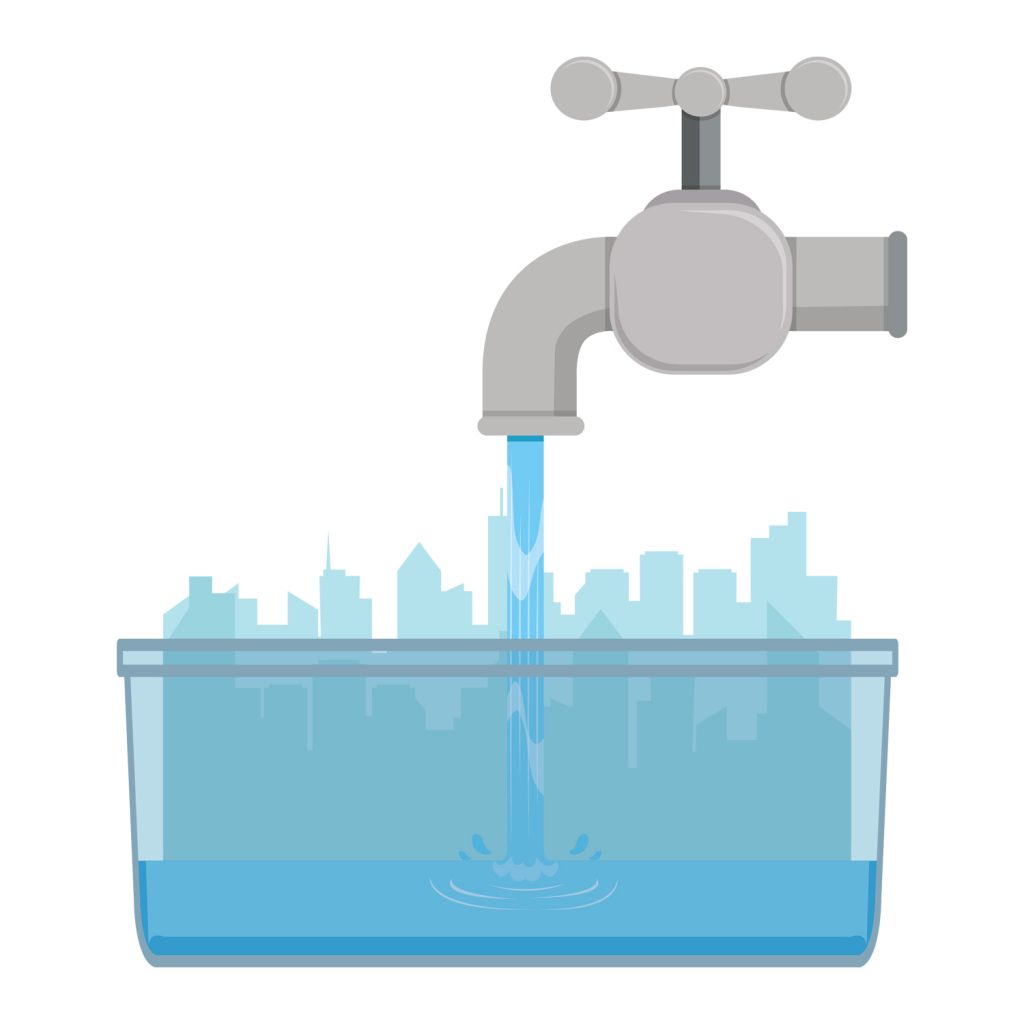
GI captures stormwater and increases infiltration into the ground to help recharge local groundwater supply.
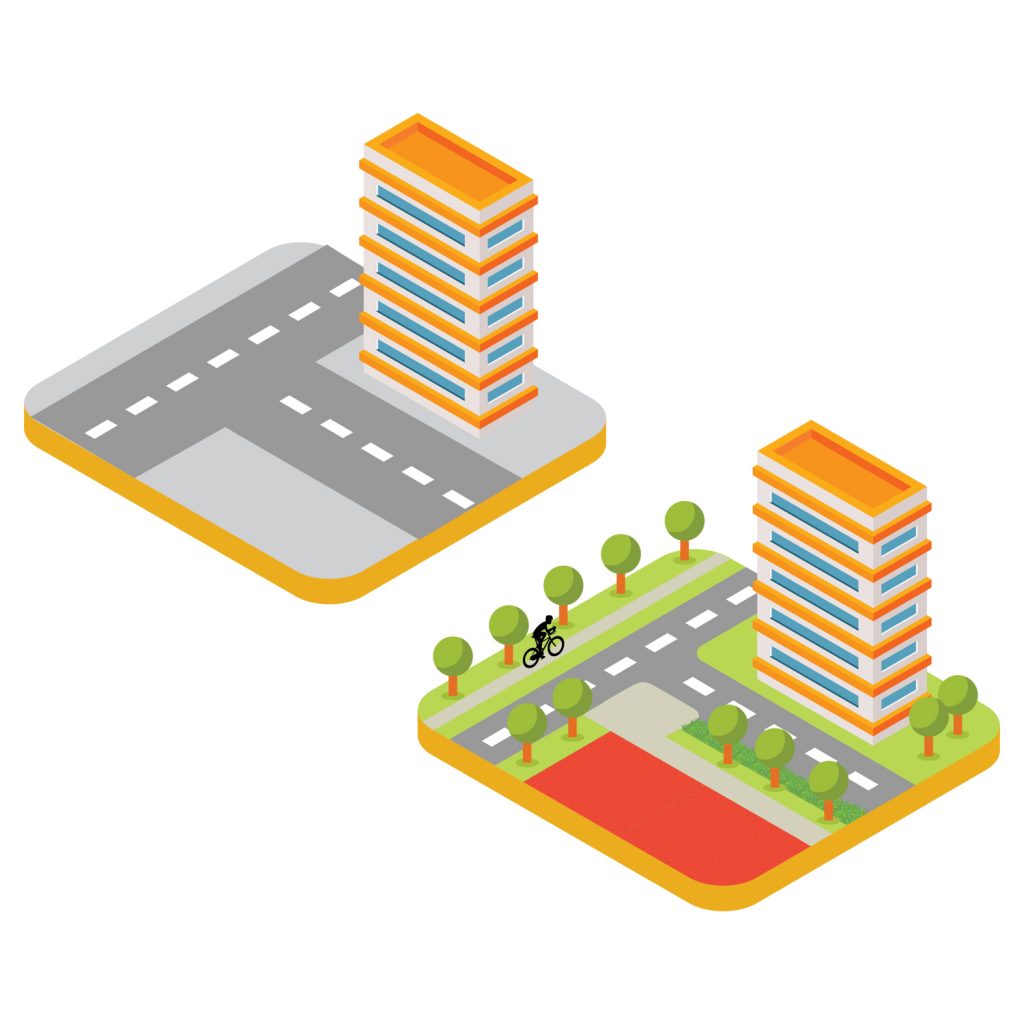
GI promotes traffic calming and increases bike and pedestrian safety through protected lanes and other planned community designs.

GI creates habitat for wildlife in urban areas by increasing vegetation.
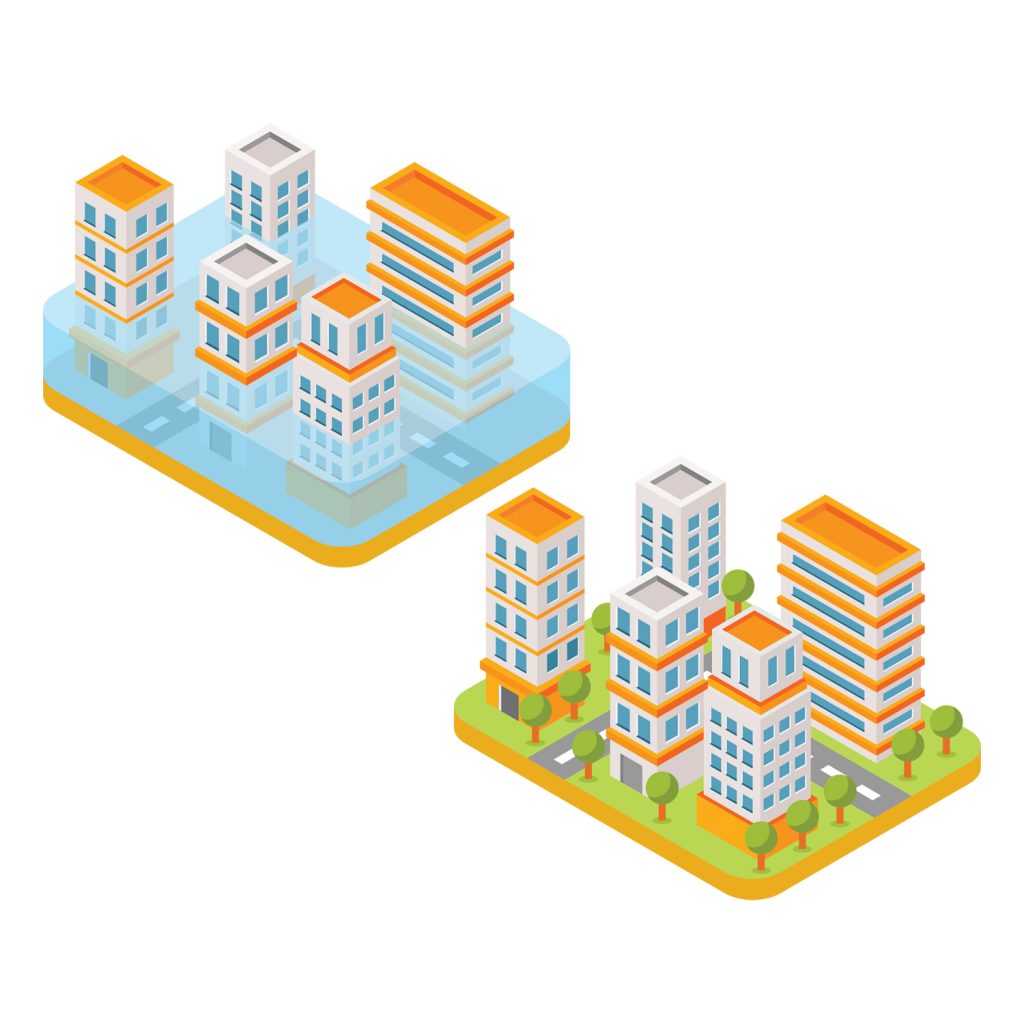
GI can mitigate flood risk in our communities by slowing and reducing stormwater runoff during storms.
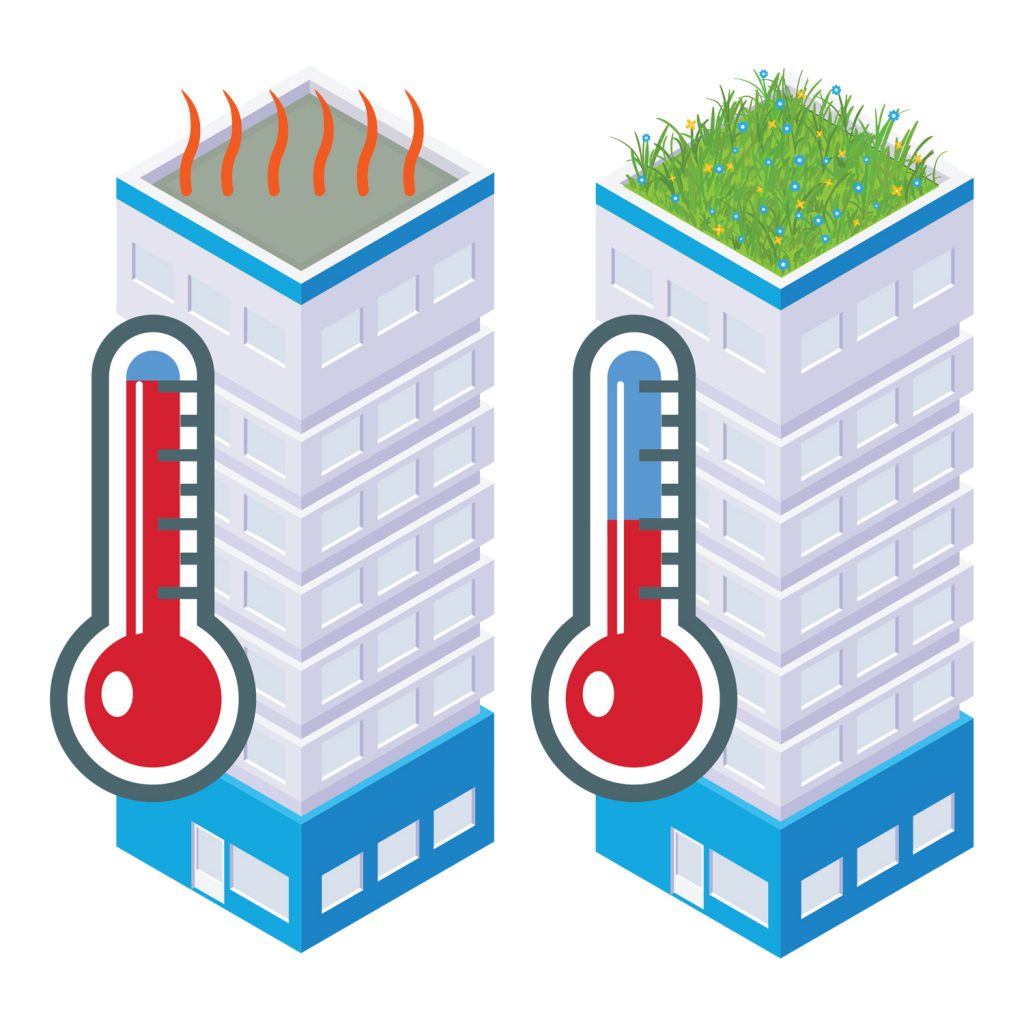
GI cools urban areas by deflecting sun radiation and providing shade.
Stages of Urban Development
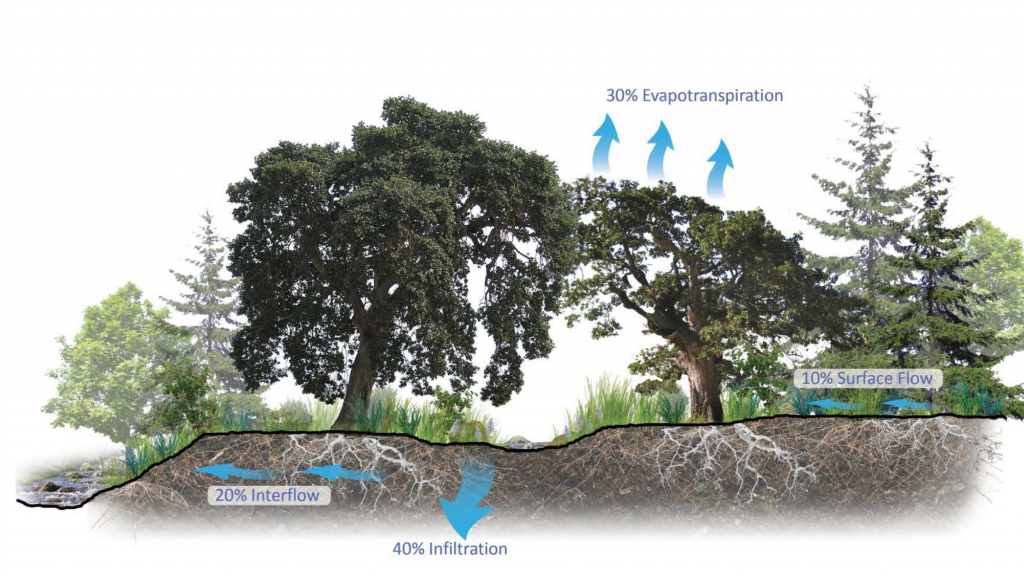
PRE-URBAN DEVELOPMENT
In undeveloped landscapes, as little as 10% of precipitation is surface flow (runoff), with the remaining 90% infiltrating the ground and being released into the atmosphere through evapotranspiration of plants.
URBANIZATION
The growth of cities, through the increase in land surfaces that are covered with buildings and pavement, decreases the amount of rain that infiltrates into the ground and decreases evapotranspiration due to the lack of vegetation. With urbanization comes a substantial increase in runoff, where in highly urban settings, as much as 75% of rainfall can turn into runoff due to the large impervious areas.
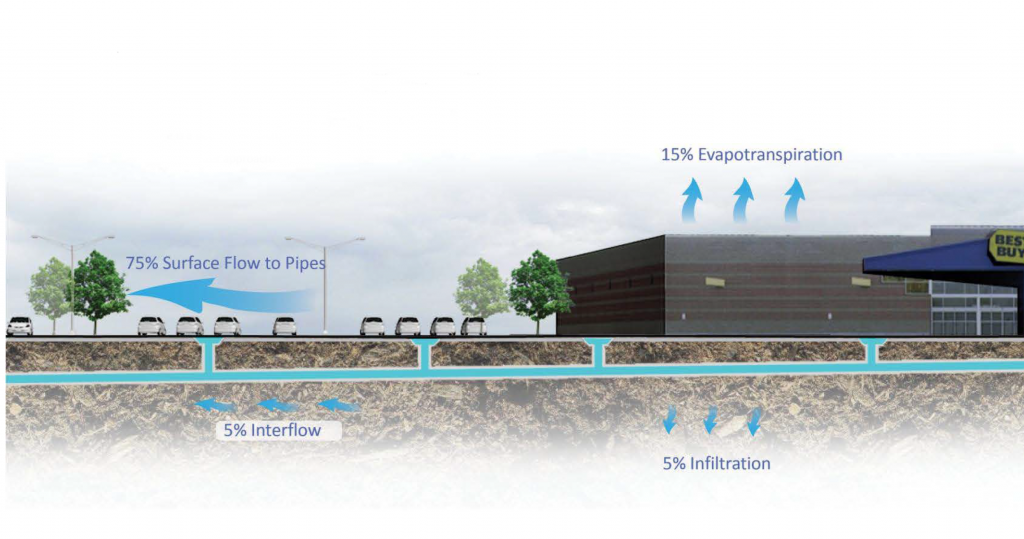
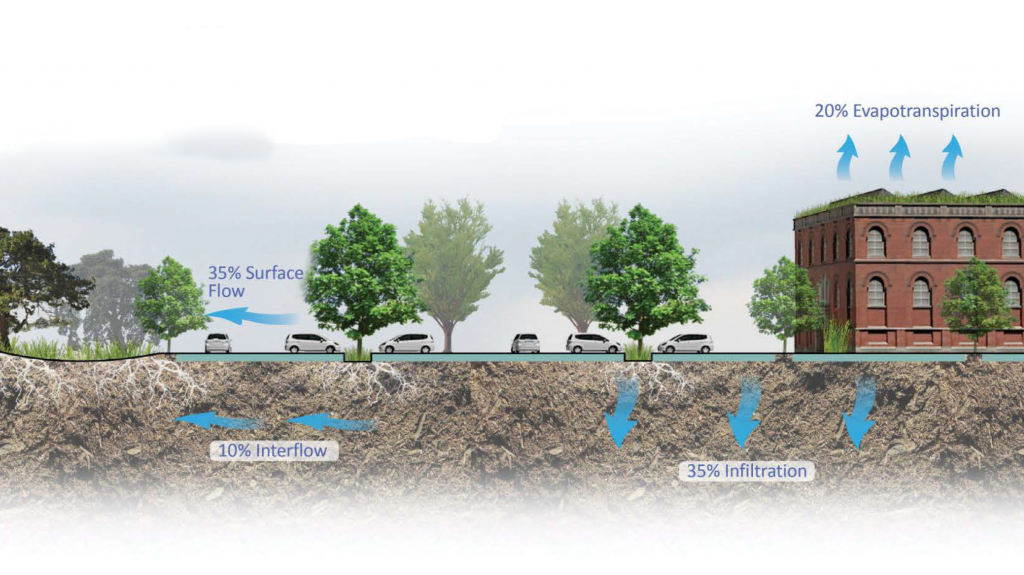
BALANCED DEVELOPMENT UTILIZING GREEN INFRASTRUCTURE
The use of green infrastructure allows for a balanced approach to urban development, as it accommodates existing infrastructure while minimizing the detrimental effects on the natural system. As a result, runoff is essentially cut in half, reduced from 75% of rainfall with traditional infrastructure to 35% with the use of green infrastructure designs.
Green Infrastructure Design Guide
Green Infrastructure Story Map
The projects listed in the below story map in the “Green Infrastructure in San Mateo County” tab include street improvement projects, which municipalities have built over the past several years, and show progress local agencies are making toward shifting stormwater infrastructure from “gray” to “green.” The projects in the “Green Infrastructure / SRTS Pilot Projects” tab are part of a pilot program funded by the San Mateo County City/County Association of Governments (C/CAG) that demonstrate the integration of green stormwater infrastructure with Safe Routes to School bike and pedestrian enhancements.
C/CAG Member Agency Green Infrastructure Pages
The Municipal Regional Stormwater Permit requires all co-permittees under the permit to implement green infrastructure plans to achieve pollutant reductions to the San Francisco Bay and to promote other water quality and flow benefits. To learn about the individual efforts of C/CAG’s member agencies, click the links below.
